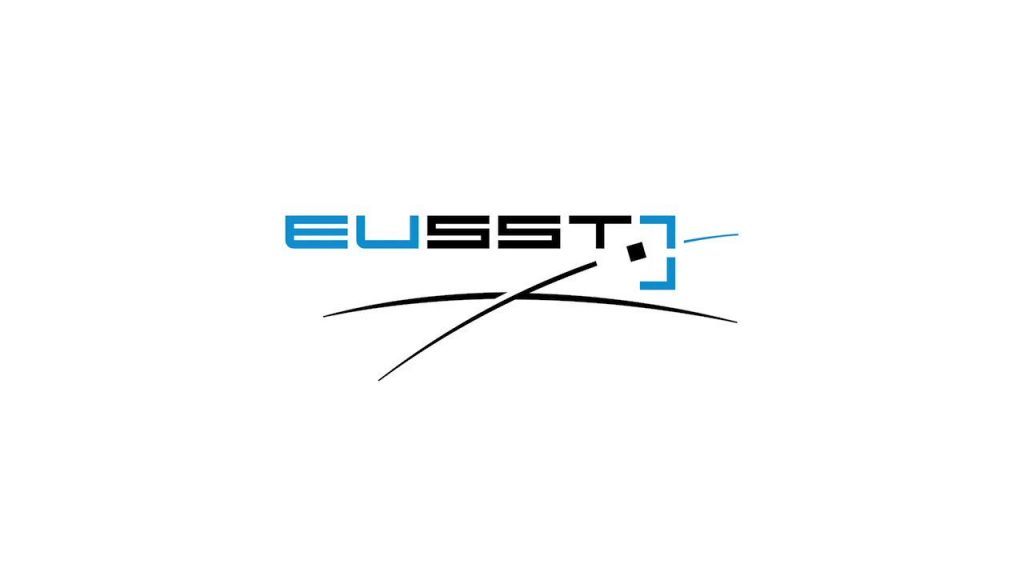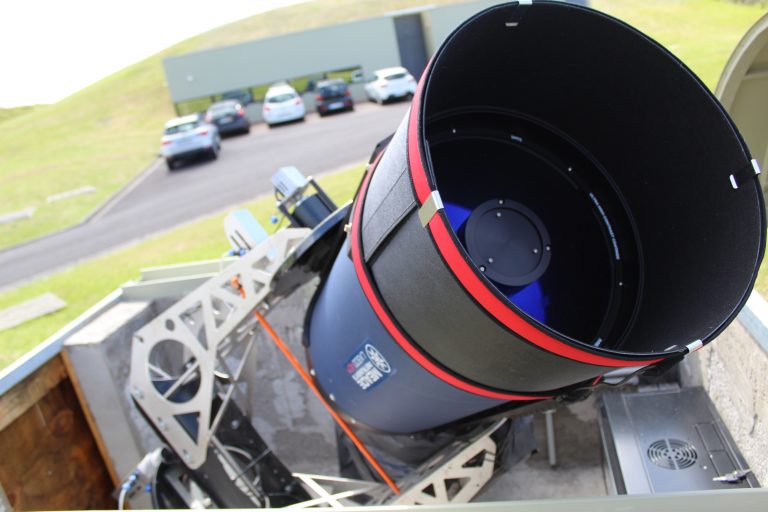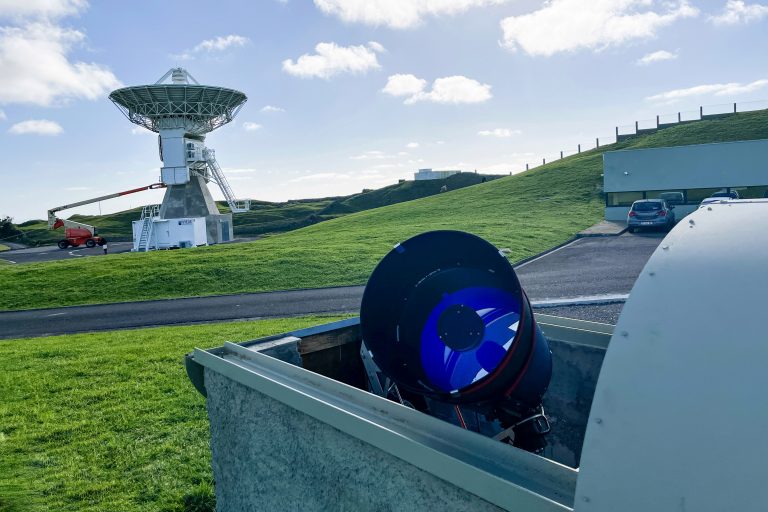Space Surveillance and Tracking
Increasingly, European economies, societies and citizens depend on space applications for communication, navigation and even earth observation. However, this need occupied the Earth's orbits with thousands of objects, including artificial satellites such as probes, and/or infrastructure, some with military and governmental interest, and even debris, and due to the filling of the orbits, the risk of collision is getting bigger.
“The European SST program aims for Europe to qualify in terms of monitoring and tracking capabilities of objects in near-Earth orbits.”

This is a project that assesses the risk of collisions in orbit and uncontrolled re-entry of space debris into the Earth's atmosphere, it is also from the SST project that fragments in orbit are detected and characterized. In order to mitigate these risks, it is important to research and track these objects, providing relevant information to interested entities. Thus, in 2014, the Space Surveillance Support Framework (SST) was established by the European Union, this decision resulted in the creation of an SST Consortium, currently composed of seven EU Member States, including Portugal.
In Portugal, the operations center is located in the Azores Archipelago, on Terceira Island, and a sensor network is located on the island of Santa Maria, Madeira and in mainland Portugal. The installed sensors differ in their characteristics and objectives, there are two types of sensors: Tracking and Surveillance.

The tracking sensor tracks a given object according to the plan created while the Surveillance sensor focuses on a zone of sky and looks for objects to increase the catalogue.
In Santa Maria, located at the RAEGE Station, an optical Tracking sensor is installed, aimed at the night-time operation of the planning, explained below by one of the SST operators, previously developed on Terceira Island.
We are responsible for preparing plans for the four sensors of the Portuguese SST Network, which consists of organizing the various objects that we want to observe during the night, objects that are required by the European SST Consortium and also some of interest to the Ministry of National Defence.

The operation of the SST sensor requires its preparation in advance, being necessary to proceed with the cooling of the chamber to reduce the noise generated by all the electronics of the equipment.

“Before we start observing it is necessary to prepare the sensor and cool the camera down to -40ºC and only then can we start the observation”
(Valério Pacheco, SOO Operator – RAEGE Santa Maria)
Ensuring the proper functioning of all equipment intended for the Portuguese SST Network in Santa Maria is also a task for operators, both in terms of information technology and sensor maintenance.
“It is my responsibility to ensure the proper functioning, every day, of computers, software and SST equipment in Santa Maria”
(Nuno Mata, SOO Operator – RAEGE Santa Maria)

These equipments are very sensitive and, for that reason, the operation can only be carried out when favorable atmospheric conditions are present for the use of the optical sensor. It is not possible to operate in strong winds, rain or cloudiness. The climate in the Azores is a challenge, so equipment maintenance has to be regular.

“It is necessary to eliminate all that are points of humidity and everything that comes from humidity, namely, corrosion. Cleaning the lens is also essential for the proper functioning of our optical sensor here in Santa Maria, as we have very cold nights with a lot of humidity that can create condensation on the lens and condition the observation.”
(Sérgio Chaves, SOO Operator – RAEGE Santa Maria)
This tracking service, on the island of Santa Maria, is provided by the RAEGE-Az team, which is dedicated and specialized in the SST project, consisting of three elements, in night-time operation of the optical sensor.
The SST project thus proves to be crucial for monitoring Earth orbits. This monitoring is essential for the preservation of the functioning of all the equipment that guarantees us access to what we now consider essential to our daily lives, such as communications, internet, navigation, and many other applications related to safety and well-being. of societies.
Infraestruturas
Na Estação RAEGE de Santa Maria encontra-se instalado um telescópio ótico otimizado para observação de objetos em órbitas geoestacionárias (GEO) e em órbitas médias terrestes (MEO), desde os 8000 km até aos 36000 km. Com interesse estratégico pela sua localização privilegiada, a observação a partir deste local, possibilita o acesso a satélites que normalmente não são visíveis do continente europeu. Graças a este sensor, ao Centro de Operações Espaciais (COpE) existente na Ilha Terceira, e aos restantes equipamentos instalados em território nacional, o Governo português contribui para a Rede Europeia de Vigilância e Rastreamento Espacial (EUSST). Este consórcio visa a atualização de catálogos de órbitas e monitorização de objetos espaciais artificiais, de forma a evitar colisões entre satélites e registando possíveis reentradas de lixo espacial na atmosfera.



Operators
The RAEGE-Az SST operators, deployed to operationalize the provision of optical observation services for the purposes of the European Commission's Space Surveillance and Tracking (SST) Program, are based at the RAEGE Station on Santa Maria Island.

Nuno Mata
RAEGE-Az
SOO Operator
RAEGE Santa Maria

Valério Pacheco
RAEGE-Az
SOO Operator
RAEGE Santa Maria

Sérgio Chaves
RAEGE-Az
SOO Operator
RAEGE Santa Maria